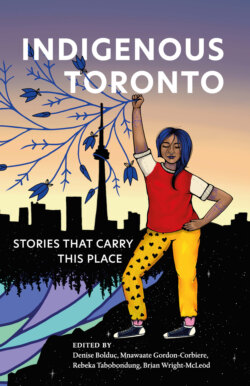Читать книгу Indigenous Toronto - Группа авторов - Страница 20
На сайте Литреса книга снята с продажи.
DIET
ОглавлениеThe soil samples collected from within one of the community longhouses yielded corn, together with a diverse range of gathered wild plants, such as raspberry, strawberry, elderberry, and several types of greens and grains that likely flourished along the margins of the settlement and its field clearings. It was corn, however, that formed the most significant portion of the diet of the ancestors, as confirmed by analysis of their teeth. Isotopic analyses of teeth from the site indicate that corn comprised at least half, if not more, of the diet. Such horticultural dependency was a necessary response to the food needs of a larger population living together year-round. Because the corn was prepared as a sticky gruel, it did cause dental cavities and periodontal disease, problems faced by all Indigenous peoples with diets dominated by corn.
In addition to agricultural crops, the community relied on the natural resources afforded by their rich local environment, including deer, small mammals, and fish. Although it is clear that a number of habitats were exploited, waterfowl, turtles, and fish productivity would have been highest in the estuary and coastal marshes of the lower Don River. One group of fish in particular, comprising American eel, Atlantic salmon, lake whitefish, and lake trout, played a significant role in the diet of the site inhabitants. Together with pickerel, these species, which consume primarily smaller fish, resulted in a signature of high levels of nitrogen isotope in the teeth and bones of the ancestors. They did, however, also fish opportunistically for bow fin, sucker, brown bullhead, rock bass, smallmouth bass, yellow perch, and sunfish in the warm season in the lower reaches and estuaries of the streams and shallow inlets along the north Lake Ontario shoreline.
